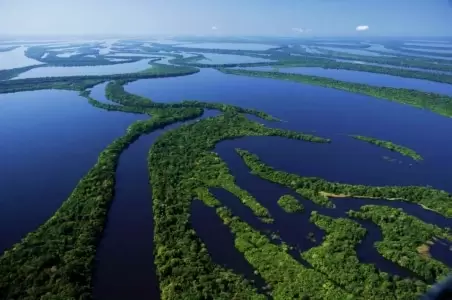
Views: 31
Researchers from Sweden, Germany, Brazil and the USA have developed a financial mechanism to support the protection of the world’s natural heritage.
Minapim credits to Lund University : In a recent study, they developed three different design options for an intergovernmental biodiversity financing mechanism. Asking what would happen if money was given to countries for providing protected areas, they simulated where the money would flow, what type of incentives this would create – and how these incentives would align with international conservation goals.
After long negotiations, the international community has agreed to safeguard the global ecosystems and improve on the status of biodiversity. The global conservation goals for 2020, called the Aichi targets, are an ambitious hallmark. Yet, effective implementation is largely lacking. Biodiversity is still dwindling at rates only comparable to the last planetary mass extinction. Additional effort is required to reach the Aichi targets and even more so to halt biodiversity loss.
“Human well-being depends on ecological life support. Yet, we are constantly losing biodiversity and therefore the resilience of ecosystems. At the international level, there are political goals, but the implementation of conservation policies is a national task. There is no global financial mechanism that can help nations to reach their biodiversity targets”, says lead author Nils Droste from Lund University, Sweden.
Brazil has successfully implemented Ecological Fiscal Transfer systems that compensate municipalities for hosting protected areas at a local level since the early 1990’s. According to previous findings, such mechanisms help to create additional protected areas. The international research team has therefore set out to scale this idea up to the global level where not municipalities but nations are in charge of designating protected areas. They developed and compared three different design options:
An ecocentric model: where only protected area extent per country counts – the bigger the protected area, the better;
A socio-ecological model: where protected areas and Human Development Index count, adding development justice to the previous model;
An anthropocentric model: where population density is also considered, as people benefit locally from protected areas.
The socio-ecological design was the one that proved to be the most efficient. The model provided the highest marginal incentives – that is, the most additional money for protecting an additional percent of a country’s area – for countries that are the farthest from reaching the global conservation goals. The result surprised the researchers.
“While we developed the socio-ecological design with a fairness element in mind, believing that developing countries might be more easily convinced by a design that benefits them, we were surprised how well this particular design aligns with the global policy goals”, says Nils Droste. “It would most strongly incentivize additional conservation action where the global community is lacking it the most”, he adds.
As the study was aimed at providing options, not prescriptions for policy makers, the study did not detail who should be paying or how large the fund should exactly be. Rather, it provides a yet unexplored option to develop a financial mechanism for biodiversity conservation akin to what the Green Climate Fund is for climate change.
“We know that we need to change land use in order to preserve biodiversity. Protecting land from degradation and providing healthy ecosystems, clean air or clean rivers is a function of the state. Giving a financial reward to governments for such public ecosystem services will ease the provision of corresponding conservation efforts and will help to put this on the agenda”, concludes Nils Droste.
Related article: Mercury in the Continental Amazon, Real Threat
Publication: Designing a global mechanism for intergovernmental biodiversity financing
Contact:
Nils Droste
nils.droste@cec.lu.se
+46 46 222 01 20
Leave a Reply